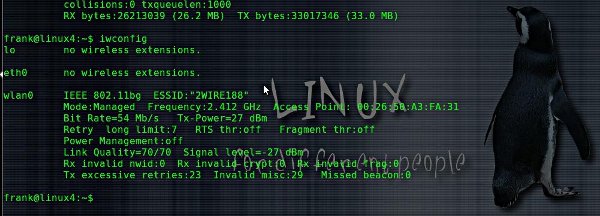I’m a bit late this month, but here we go, these are the top 7 of the most read articles from Linuxaria in the month of October, it’s your opportunity to read them if you missed them during last month.
7 – Logcheck: why I love you
If you have a server, you probably would like to continually be updated on what the system logs records; a very useful tool that I discover is Logcheck: it works very well, and I’m very greatful with the developers.
I use it to have various email about the logs between a range of time like [3 hours].
6 – Virus Scanning on Linux
Can Linux be infected by MalWare and is it a big concern? The answer to that question is both Yes and No: Yes, Linux can be Infected and No, it isn’t a big nightmare – yet.
Unless you downloaded the Unreal IRCd (Unreal IRC daemon) and installed it between November 2009 and June 2010 on your Linux server. There was a Trojan downloader in it. A Linux Trojan. See the Softpedia Article
5 – Windows entry disappeared in Grub2 menu
I’ve finally terminated my upgrade to Xubuntu 11.10, with the usual small problems, nothing really too bad.
But now, when i boot I don’t see anymore the “Windows” entry in the boot menu made with grub2, I’ve installed os-prober that should help in will find additional entries on the hard disks and add them to the menu, but this don’t solved too my problem.
As alternative you could have your windows Entry in place, but when selecting it, you get an error like:
- you need to load kernel first
- chainloader: no such command.
- no such partition
So this is a small guide to restore your Windows entry in your Grub2 system.
4 – Understanding Nmap Commands: In depth Tutorial with examples
As we all know, Nmap (Network Mapper) is a stealth port scanner widely used by network security experts (including forensics & Pen-testing Experts). In this article we’ll see the different types of Nmap Scans, its techniques, understanding the purpose and goals of each scan , its advantages or disadvantages over other scanning tools, which could be better at evading firewalls & IDS (To a certain extent) and much more. In this first part, I have made my best to explain the basic scanning techniques, Host discovery options, port scanning options, techniques used in detecting Operating system & services running on the system.
i also give Nmap as already installed on your system.
3 – An Intro to Linux Distros and Live CDs
or Try before you “Buy”
With over 600 GNU/Linux distributions available, 300 of which are under active development, what’s the best? How do you choose?
It would be nice if there was a Linux Store, like the Apple Stores, where you could actually walk in and “testdrive” a Distro (short for Distribution). Unfortunately, there aren’t any “Linux Stores”. Money’s just not there. Apple products are premium products with premium price tags. Leasing a store, stocking it with “testdrive systems” and having Geeky Guru’s on the payroll just won’t work with a FREE product.
2 – Introduction to Cgroups, the Linux Control Group
Cgroups is present in the official Linux kernel 2.6.24 (late 2007), still he’s not much know or used (at least for what i know).
In this article I’ll give you an overview of this powerful Linux tool to control how much CPU, memory, disk I/O or network I/O each process or user can use in your server.
So in short cgroups it’s a feature to limit, account and isolate resource usage (CPU, memory, disk I/O, etc.) of process groups.
Let’s see how.
1 – The many faces of Linux
Linux is fundamentally a command line Operating System. Anything and everything can be done through the command line – system configuration, connecting to WiFi access points, even accessing new hardware devices before the Linux Kernel gets a driver for it (like USB Flash Drives before Linux Kernel 2.4 – pre 2001)
A quick example is the iwconfig command. Here is a quick peek at my current WiFi connection as seen from the command line:

Popular Posts:
- None Found
